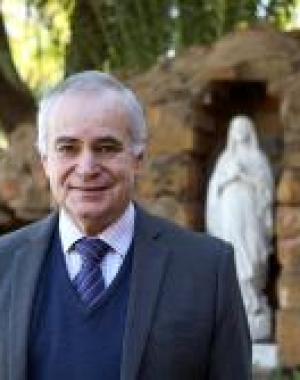This article explores chapters 7-8 of the Directory for Catechesis.
Introduction and Context
It is now twenty-three years since I eagerly read the last General Directory for Catechesis and made efforts to implement its teachings within the catechetical programs in some of the Catholic schools in Australia. Much has changed in our world since 1997, and the new Directory for Catechesis has achieved an outstanding synthesis of what was sound and helpful in the earlier document, while taking us forward with new and profound insights for today. In this article, l will be addressing the essential contents of chapters seven and eight of the Directory, namely: “Methodology in Catechesis” and “Catechesis in the Lives of Persons.” Before doing so, however, I would like to frame my comments within the context of the Directory as a whole. Firstly, it is essential to understand that catechesis must now take place in a world overwhelmingly influenced by globalization and the digital culture. According to the Directory, there are advantages and disadvantages associated with both phenomena. The danger associated with globalization is the tendency towards international standardization, which puts pressure on local cultures. With regard to digital culture, there is an implicit tendency towards a “one size fits all” approach implicit in digital culture, which undermines an essential anthropological truth.[1] We must always keep in mind that every person is unique and unrepeatable.
It seems to me that there are three essential insights running through the document which could perhaps be summed up in three words: accompaniment, kerygma, and mystagogy. All of these themes appear multiple times in the document.
The emphasis on kerygma takes up a focus that began to appear strongly in Evangelii Gaudium, which had already taught that “all Christian formation consists of entering more deeply into the kerygma.”[2] It was also in this 2013 document that we were given a simple definition: “Jesus Christ loves you; he gave his life to save you; and now he is living at your side every day to enlighten, strengthen and free you.”[3] The Directory is insistent that in the initial stages of evangelization the primary focus should be on making present and announcing Jesus Christ. Moreover, at every step of the way, there can be no true evangelization if the name and teaching of Jesus Christ, the Son of God” are not proclaimed.[4]
Mystagogy, the Directory reminds us, is a liturgical catechesis highlighting the way in which the liturgy makes present the mysteries revealed in the Scriptures. It introduces us to the living experience of the Christian community, the true setting of the life of faith. It is a progressive and dynamic process, rich in signs and expressions and beneficial for the integration of every dimension of the person (DC 2). The emphasis on mystagogy has been regarded as foundational for catechesis since the publication of the Apostolic exhortation Sacramentum Caritatis in 2007.
Finally, those familiar with the work of Pope Francis will not be surprised with the highlighting of accompaniment. This notion occurs in the Directory more than any other. It acknowledges the pastoral difficulties being experienced at this time by so many in our world. We are asked to emphasize the mercy and love of God, who seeks out the lost and the lonely in our world.
Methodology in Catechesis
I have now spent more than thirty years thinking about issues of catechetical methodology, making this a significant component of my doctoral, post-doctoral, and practical work. I wish to affirm that in this chapter the Directory has drawn together all of the best practices of which I am currently aware in this field. The document soundly affirms that there can be no single method in catechesis—one size certainly does not fit all. What is more, it is made clear that catechesis is an event of grace, brought about by the word of God within the experience of the person. At the same time, it is grounded in an authentic Christian anthropology and guided by the demands of the Gospel (see DC 195). The example of the teaching of Jesus in the parables is offered as the best example of catechesis in action. In the parables, the same concrete and human image is offered to everyone, but the meaning is left to unfold in accordance with the work of the Holy Spirit in each person in their own time.
The rest of this online article is available for current Guild members.
This article is from The Catechetical Review (Online Edition ISSN 2379-6324) and may be copied for catechetical purposes only. It may not be reprinted in another published work without the permission of The Catechetical Review by contacting [email protected]


















